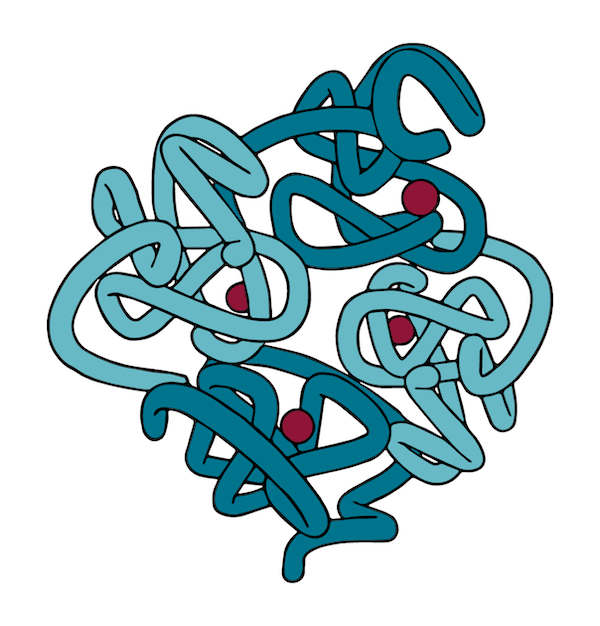Low hemoglobin levels could cause you to be turned away at the blood center. Here’s what you need to know before you head to your appointment.
It's the day of your blood donation appointment, and you've prepared everything perfectly. You ate a healthy dinner the night before, drank plenty of water, got a great night's sleep, and had an iron-rich breakfast before heading to the blood center. Yet when you arrive, you're told something unexpected – you can't donate today due to a low hemoglobin count.
This scenario is more common than you might think. Every Red Cross Blood Bank and donation center checks hemoglobin levels before accepting donations, and many potential donors are turned away when their levels test too low. Understanding the criteria for giving blood, particularly regarding hemoglobin requirements, can help ensure a successful donation experience and prevent a disappointing trip to the donation center.
What is Hemoglobin and Why Does it Matter?
Hemoglobin is a crucial protein found in red blood cells that transports oxygen throughout the body. This vital component ensures that organs and tissues receive the oxygen they need to function properly. Importantly, it's also what gives blood its distinctive red color.
Pictured: The hemoglobin molecule structure, showing the protein responsible for carrying oxygen through your blood cells.
When you donate blood, your hemoglobin levels temporarily decrease as your body loses some red blood cells. This explains why you might feel dizzy or lightheaded after donating – your body adjusts to having fewer oxygen-carrying cells. While your body begins producing new red blood cells almost immediately, recovery is crucial.
Think of your hemoglobin levels like a smartphone battery: charging from 40% to 100% is much quicker than starting from zero. Similarly, if you donate blood with low hemoglobin levels, your recovery will take longer, and you might experience symptoms like fatigue, dizziness, or pale skin—signs often associated with anemia. Starting your donation with healthy hemoglobin levels ensures your body can effectively replenish its red blood cells without disrupting your daily activities.
Understanding Blood Center Hemoglobin Requirements
Blood centers, including the Red Cross Blood Bank, have strict criteria for blood donation, including checking your hemoglobin levels. This screening is essential because:
- It ensures your body has enough red blood cells to maintain healthy function after donation
- It protects both the donor and the recipient
- It helps prevent post-donation complications related to low hemoglobin count
Required Hemoglobin Levels for Blood Donation
The Red Cross Blood Bank maintains specific guidelines for acceptable hemoglobin levels:
- Men: 13.0 to 17.5 g/dL
- Women: 12.5 to 15.5 g/dL
These requirements ensure that donors have sufficient red blood cells before giving blood. Think of your body's hemoglobin levels like a smartphone battery – starting with a fuller charge (higher hemoglobin) helps your body recover more quickly after donation.
Understanding Low Hemoglobin Count
If you're turned away due to a low hemoglobin count, you're not alone. Several factors can affect your levels:
- Insufficient iron intake
- Poor absorption of dietary iron
- Recent blood donation
- Underlying health conditions
- Certain medications
Anemia, a condition characterized by insufficient red blood cells, can also cause low hemoglobin levels. However, it's important to note that having a low hemoglobin count doesn't automatically mean you have anemia—only a healthcare provider can make this diagnosis.
How to Improve Low Hemoglobin Levels
If your iron levels are low, there are several ways to boost your hemoglobin:
1. Dietary Changes:
a) Consume iron-rich foods
b) Include vitamin C to enhance iron absorption
c) Avoid foods that can interfere with iron absorption
2. Lifestyle Modifications:
a) Get adequate rest
b) Stay hydrated
c) Exercise regularly
3. Medical Support:
a) Consult with your healthcare provider
b) Consider iron supplements if recommended
c) Address any underlying health issues
Tracking and Monitoring Your Hemoglobin
Regularly monitoring your hemoglobin levels can help you prepare better for blood donation. Options include:
- Regular check-ups with your healthcare provider
- Blood work analysis
- Tracking iron levels using apps
- Following up with the Red Cross Blood Bank
Tips for Successful Blood Donation
To ensure your hemoglobin levels meet the criteria for giving blood:
a) Eat iron-rich meals several days before the donation
b) Stay well-hydrated
c) Get adequate sleep
2. Schedule strategically:
a) Allow enough time between donations
b) Book morning appointments when possible
c) Avoid donation during heavy menstrual periods
3. Follow post-donation care:
a) Continue eating iron-rich foods
b) Take recommended supplements
c) Schedule your next donation appropriately
How Can You Track Your Iron Levels?
Maintaining healthy iron levels is crucial for successful blood donation. You can discuss your blood work with a doctor and track your iron levels using AnemoCheck Mobile—our FREE app that instantly measures your iron levels with just a fingernail selfie. Download AnemoCheck Mobile today to help ensure you're prepared for your next donation.







Leave a comment
This site is protected by hCaptcha and the hCaptcha Privacy Policy and Terms of Service apply.